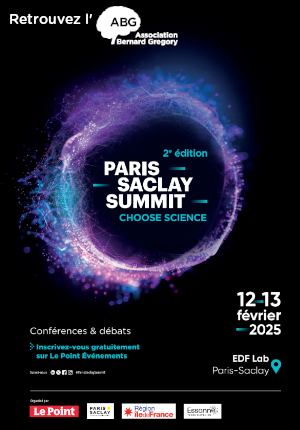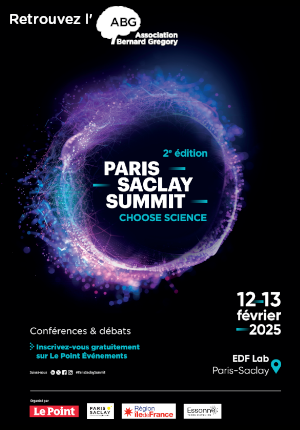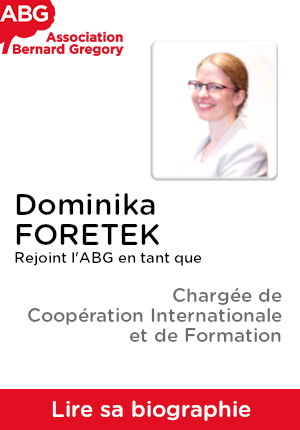Etude de la dynamique des électrons dans la magnétosphère de Mercure: les données des satellites BepiColombo et simulations numériques // Investigation of the electron dynamics in Mercury's magnetosphere: BepiColombo observations and numerical simulations
|
ABG-128283
ADUM-61115 |
Sujet de Thèse | |
| 01/02/2025 | Contrat doctoral |
Sorbonne Université SIM (Sciences, Ingénierie, Médecine)
Palaiseau Cedex - France
Etude de la dynamique des électrons dans la magnétosphère de Mercure: les données des satellites BepiColombo et simulations numériques // Investigation of the electron dynamics in Mercury's magnetosphere: BepiColombo observations and numerical simulations
- Terre, univers, espace
Planétologie, Mercure, BepiColombo, Plasmas, Analyse de données, Simulations numériques
Planetology, Mercury, BepiColombo, Plasmas, Data analysis, Numerical simulations
Planetology, Mercury, BepiColombo, Plasmas, Data analysis, Numerical simulations
Description du sujet
La magnétosphère de Mercure est plus dynamique par rapport à celles d'autres planètes du système solaire, en raison de sa proximité avec le Soleil et de son faible champ magnétique. L'environnement de Mercure a été exploré pour la première fois par la NASA/Mariner (1974-1975), suivi par la mission NASA/MESSENGER (2011-2015). Malgré la richesse des observations fournies par MESSENGER sur la planète, la charge utile du satellite était très limitée. En particulier, MESSENGER ne transportait aucun instrument «ondes », dédié aux mesures des champs électrique et magnétique à haute fréquence, qui sont essentielles à la compréhension des processus dynamiques se produisant principalement aux échelles cinétiques via les interactions onde-particule.
BepiColombo – une mission conjointe euro-japonaise lancée en 2018 élargira considérablement notre compréhension de Mercure et de son environnement. La mission se compose de deux satellites: MPO (Mercury Magnetospheric Orbiter) sous la responsabilité de l'ESA et dédié à l'étude de la planète solide; et Mio (anciennement MMO : Mercury Magnetospheric Orbiter) sous la responsabilité japonaise, JAXA et dédié à l'analyse de la magnétosphère herméenne et de son interaction avec le vent solaire. L'insertion en orbite est prévue pour novembre 2026, d'ici là BepiColombo est en phase de croisière et a effectué plusieurs survols de la Terre, de Vénus et de Mercure.
Entre 2022 et 2024, BepiColombo a effectué 4 survols de Mercure. Même si les instruments de BepiColombo ne sont pas encore déployés, des observations extrêmement intéressantes ont été faites. En effet, l'analyseur d'ions MSA a permis une 1ère mesure de la composition ionique quand l'analyseur d'électrons MEA a révélé que les électrons sont accélérés jusqu'à quelques keV dans la magnétosphère côté nuit et précipitent à la surface [Aizawa et al., Nature Com, 2023]. Lors des mêmes survols, les magnétomètres à induction ont détecté les premières ondes HF dans l'environnement herméen [Ozaki et al., Nature Astronomy, 2023], dont l'impact sur les électrons énergétiques est actuellement étudié [Sahraoui et al. en préparation.]
Le projet de thèse vise à étudier la dynamique des particules du plasma, en particulier des électrons, dans la magnétosphère de Mercure et ses régions voisines (pré-choc, magnétogaine et exosphère). Cela implique une forte synergie entre observations, simulations numériques et théorie. La partie observationnelle utilisera d'abord les données BepiColombo acquises lors des 6+1 survols de Mercure, avant d'exploiter l'intégralité des données après insertion en orbite et déploiement des instruments en novembre 2026. Le travail consistera à identifier la nature des ondes HF observées par l'instrument DBSC (PI : F. Sahraoui) et leur corrélation potentielle avec les observations d'électrons énergétiques dans les données MEA [CoI : Sae Aizawa]. L'étape suivante consistera à identifier les processus d'interactions onde-particule responsables de l'accélération des électrons (cf. amortissement de Landau ? résonance cyclotron ?) et à mettre en évidence leur empreinte dans les fonctions de distribution de vitesse des particules à l'aide de nouvelles techniques [Behar et al., 2020 ; Chen et coll., 2019]. Aussi, l'impact des structures de l'espace de phase (ex. l'anisotropie de pression, les faisceaux) sur la génération des ondes HF sera également étudié ainsi que les régions clés où elle se produit. Ceci est particulièrement pertinent pour comprendre le transport des électrons et leur impact sur la structure globale et la dynamique de la magnétosphère. L'interprétation des observations sera guidée par des travaux théoriques et numériques utilisant les codes PIC 3D et/ou un code Maxwell-Vlasov.
Ce projet sera réalisé dans le cadre d'une large collaboration internationale : Japon (ISAS/JAXA, Tohoku-JP, Kanazawa-JP), USA, UK, Suède, Allemagne, Autriche, Italie et IRAP/Toulouse, Obs. Côte d'Azur.
------------------------------------------------------------------------------------------------------------------------------------------------------------------------
------------------------------------------------------------------------------------------------------------------------------------------------------------------------
The Mercury's magnetosphere is more dynamical than those of other planets in our solar system, because of its proximity to the Sun and its weak planetary magnetic field. Mercury's environment was first explored by the NASA/Mariner (1974–1975), followed by the NASA/MESSENGER mission (2011-2015). Despite the wealth of observations that MESSENGER provided about the planet, the spacecraft payload was very limited. In particular, MESSENGER did not carry any “wave” instruments, namely high frequency electric and magnetic field antennas, which are crucial to understanding the dynamical processes occurring mainly at the kinetic scales through wave-particle interactions.
The BepiColombo – an Euro-Japanese joint mission launched in 2018 will significantly expand our understanding of Mercury and its environment. The mission consists of two spacecraft: MPO (Mercury Magnetospheric Orbiter) led by ESA and dedicated to studying the solid planet; and Mio (former MMO: Mercury Magnetospheric Orbiter) led by Japan space agency (JAXA) and dedicated to analyzing the Hermean magnetosphere and its interaction with the solar wind. The orbit insertion is scheduled for November 2026, until then the spacecraft is in cruise phase and performed several flybys of Earth, Venus and Mercury.
Between 2022-2024, BepiColombo performed four gravity assist manoeuvres at Mercury. Even though BepiColombo is in a “stacked configuration” during cruise, meaning that the instruments cannot yet be fully operated, still, they made very exciting observations. Indeed, despite their limited field-of-view or being not yet deployed, the particle sensors and the plasma wave instruments allowed us to get a hint of the ion composition and the wave dynamics at Mercury, respectively. During the second Mercury flyby, the Mio electron analyser (MEA) revealed that electrons are accelerated up to a few keV in the dawn night side magnetosphere and precipitate onto the surface [Aizawa et al., Nature Com, 2023]. During the same flybys the PWI/search-coil magnetometer detected the first high frequency waves in the Hermean environment [Ozaki et al., Nature Astronomy, 2023], whose impact on energetic electrons is currently being investigated [Sahraoui et al. in prep.]
The thesis project aims at studying the dynamics of the plasma particles, in particular the electrons, in the Mercury's magnetosphere and its neighbouring regions (foreshock, magnetosheath, and exosphere). It involves strong synergy between spacecraft observations, numerical simulations and theory. The observational part will use first the BepiColombo data acquired during the 6+1 Mercury flybys, before exploiting the full data upon orbit insertion and full instrument deployment in Nov. 2026. The work will consist in identifying the nature of the observed HF waves on the Mio/PWI/DBSC instrument (PI: F. Sahraoui) and their potential correlation with observations of energetic electrons in Mio/MPPE/MEA data [CoI: Sae Aizawa]. The next step will deal with identifying the processes of wave-particle interactions responsible of energizing electrons (e.g., Landau damping, cyclotron resonance) and evidencing their footprint in the electron VDFs (velocity distribution functions) using novel techniques [Behar et al., 2020; Chen et a., 2019]. Likewise, the impact of phase space structures (i.e., pressure anisotropy, beams) on generating the HF waves will also be investigated as well as the key regions where those generation processes occur. This is particularly relevant regarding electron transport and its impact on the global structure and dynamics of the magnetosphere. The interpretation of the observations will be guided by theoretical and numerical works using 3D PIC and/or a full Maxwell-Vlasov codes.
This project will be carried out within a broad international collaboration: Japan (ISAS/JAXA, Tohoku-JP, Kanazawa-JP), USA, UK, Sweden, Germany, Austria, Italy, and IRAP/Toulouse, Obs. Côte d'Azur.
------------------------------------------------------------------------------------------------------------------------------------------------------------------------
------------------------------------------------------------------------------------------------------------------------------------------------------------------------
Début de la thèse : 01/10/2025
WEB : https://www.lpp.polytechnique.fr/-Fouad-Sahraoui-
BepiColombo – une mission conjointe euro-japonaise lancée en 2018 élargira considérablement notre compréhension de Mercure et de son environnement. La mission se compose de deux satellites: MPO (Mercury Magnetospheric Orbiter) sous la responsabilité de l'ESA et dédié à l'étude de la planète solide; et Mio (anciennement MMO : Mercury Magnetospheric Orbiter) sous la responsabilité japonaise, JAXA et dédié à l'analyse de la magnétosphère herméenne et de son interaction avec le vent solaire. L'insertion en orbite est prévue pour novembre 2026, d'ici là BepiColombo est en phase de croisière et a effectué plusieurs survols de la Terre, de Vénus et de Mercure.
Entre 2022 et 2024, BepiColombo a effectué 4 survols de Mercure. Même si les instruments de BepiColombo ne sont pas encore déployés, des observations extrêmement intéressantes ont été faites. En effet, l'analyseur d'ions MSA a permis une 1ère mesure de la composition ionique quand l'analyseur d'électrons MEA a révélé que les électrons sont accélérés jusqu'à quelques keV dans la magnétosphère côté nuit et précipitent à la surface [Aizawa et al., Nature Com, 2023]. Lors des mêmes survols, les magnétomètres à induction ont détecté les premières ondes HF dans l'environnement herméen [Ozaki et al., Nature Astronomy, 2023], dont l'impact sur les électrons énergétiques est actuellement étudié [Sahraoui et al. en préparation.]
Le projet de thèse vise à étudier la dynamique des particules du plasma, en particulier des électrons, dans la magnétosphère de Mercure et ses régions voisines (pré-choc, magnétogaine et exosphère). Cela implique une forte synergie entre observations, simulations numériques et théorie. La partie observationnelle utilisera d'abord les données BepiColombo acquises lors des 6+1 survols de Mercure, avant d'exploiter l'intégralité des données après insertion en orbite et déploiement des instruments en novembre 2026. Le travail consistera à identifier la nature des ondes HF observées par l'instrument DBSC (PI : F. Sahraoui) et leur corrélation potentielle avec les observations d'électrons énergétiques dans les données MEA [CoI : Sae Aizawa]. L'étape suivante consistera à identifier les processus d'interactions onde-particule responsables de l'accélération des électrons (cf. amortissement de Landau ? résonance cyclotron ?) et à mettre en évidence leur empreinte dans les fonctions de distribution de vitesse des particules à l'aide de nouvelles techniques [Behar et al., 2020 ; Chen et coll., 2019]. Aussi, l'impact des structures de l'espace de phase (ex. l'anisotropie de pression, les faisceaux) sur la génération des ondes HF sera également étudié ainsi que les régions clés où elle se produit. Ceci est particulièrement pertinent pour comprendre le transport des électrons et leur impact sur la structure globale et la dynamique de la magnétosphère. L'interprétation des observations sera guidée par des travaux théoriques et numériques utilisant les codes PIC 3D et/ou un code Maxwell-Vlasov.
Ce projet sera réalisé dans le cadre d'une large collaboration internationale : Japon (ISAS/JAXA, Tohoku-JP, Kanazawa-JP), USA, UK, Suède, Allemagne, Autriche, Italie et IRAP/Toulouse, Obs. Côte d'Azur.
------------------------------------------------------------------------------------------------------------------------------------------------------------------------
------------------------------------------------------------------------------------------------------------------------------------------------------------------------
The Mercury's magnetosphere is more dynamical than those of other planets in our solar system, because of its proximity to the Sun and its weak planetary magnetic field. Mercury's environment was first explored by the NASA/Mariner (1974–1975), followed by the NASA/MESSENGER mission (2011-2015). Despite the wealth of observations that MESSENGER provided about the planet, the spacecraft payload was very limited. In particular, MESSENGER did not carry any “wave” instruments, namely high frequency electric and magnetic field antennas, which are crucial to understanding the dynamical processes occurring mainly at the kinetic scales through wave-particle interactions.
The BepiColombo – an Euro-Japanese joint mission launched in 2018 will significantly expand our understanding of Mercury and its environment. The mission consists of two spacecraft: MPO (Mercury Magnetospheric Orbiter) led by ESA and dedicated to studying the solid planet; and Mio (former MMO: Mercury Magnetospheric Orbiter) led by Japan space agency (JAXA) and dedicated to analyzing the Hermean magnetosphere and its interaction with the solar wind. The orbit insertion is scheduled for November 2026, until then the spacecraft is in cruise phase and performed several flybys of Earth, Venus and Mercury.
Between 2022-2024, BepiColombo performed four gravity assist manoeuvres at Mercury. Even though BepiColombo is in a “stacked configuration” during cruise, meaning that the instruments cannot yet be fully operated, still, they made very exciting observations. Indeed, despite their limited field-of-view or being not yet deployed, the particle sensors and the plasma wave instruments allowed us to get a hint of the ion composition and the wave dynamics at Mercury, respectively. During the second Mercury flyby, the Mio electron analyser (MEA) revealed that electrons are accelerated up to a few keV in the dawn night side magnetosphere and precipitate onto the surface [Aizawa et al., Nature Com, 2023]. During the same flybys the PWI/search-coil magnetometer detected the first high frequency waves in the Hermean environment [Ozaki et al., Nature Astronomy, 2023], whose impact on energetic electrons is currently being investigated [Sahraoui et al. in prep.]
The thesis project aims at studying the dynamics of the plasma particles, in particular the electrons, in the Mercury's magnetosphere and its neighbouring regions (foreshock, magnetosheath, and exosphere). It involves strong synergy between spacecraft observations, numerical simulations and theory. The observational part will use first the BepiColombo data acquired during the 6+1 Mercury flybys, before exploiting the full data upon orbit insertion and full instrument deployment in Nov. 2026. The work will consist in identifying the nature of the observed HF waves on the Mio/PWI/DBSC instrument (PI: F. Sahraoui) and their potential correlation with observations of energetic electrons in Mio/MPPE/MEA data [CoI: Sae Aizawa]. The next step will deal with identifying the processes of wave-particle interactions responsible of energizing electrons (e.g., Landau damping, cyclotron resonance) and evidencing their footprint in the electron VDFs (velocity distribution functions) using novel techniques [Behar et al., 2020; Chen et a., 2019]. Likewise, the impact of phase space structures (i.e., pressure anisotropy, beams) on generating the HF waves will also be investigated as well as the key regions where those generation processes occur. This is particularly relevant regarding electron transport and its impact on the global structure and dynamics of the magnetosphere. The interpretation of the observations will be guided by theoretical and numerical works using 3D PIC and/or a full Maxwell-Vlasov codes.
This project will be carried out within a broad international collaboration: Japan (ISAS/JAXA, Tohoku-JP, Kanazawa-JP), USA, UK, Sweden, Germany, Austria, Italy, and IRAP/Toulouse, Obs. Côte d'Azur.
------------------------------------------------------------------------------------------------------------------------------------------------------------------------
------------------------------------------------------------------------------------------------------------------------------------------------------------------------
Début de la thèse : 01/10/2025
WEB : https://www.lpp.polytechnique.fr/-Fouad-Sahraoui-
Nature du financement
Contrat doctoral
Précisions sur le financement
Concours pour un contrat doctoral
Présentation établissement et labo d'accueil
Sorbonne Université SIM (Sciences, Ingénierie, Médecine)
Etablissement délivrant le doctorat
Sorbonne Université SIM (Sciences, Ingénierie, Médecine)
Ecole doctorale
127 Astronomie et Astrophysique d'Ile de France
Profil du candidat
Master en physique, astrophysiques ou en physique des plasmas
Connaissance en informatiques (Python, Matlab, IDL) et simulations numériques (un plus).
Master in physics, astrophysics ou plasma physics Experience in coding (Python, or Matlab, or IDL) and numerical simulations (appreciated)
Master in physics, astrophysics ou plasma physics Experience in coding (Python, or Matlab, or IDL) and numerical simulations (appreciated)
30/04/2025
Postuler
Fermer
Vous avez déjà un compte ?
Nouvel utilisateur ?
Besoin d'informations sur l'ABG ?
Vous souhaitez recevoir nos infolettres ?
Découvrez nos adhérents
 MabDesign
MabDesign  Généthon
Généthon  Groupe AFNOR - Association française de normalisation
Groupe AFNOR - Association française de normalisation  SUEZ
SUEZ  Nokia Bell Labs France
Nokia Bell Labs France  Aérocentre, Pôle d'excellence régional
Aérocentre, Pôle d'excellence régional  ONERA - The French Aerospace Lab
ONERA - The French Aerospace Lab  Tecknowmetrix
Tecknowmetrix  Ifremer
Ifremer  CASDEN
CASDEN  CESI
CESI  Laboratoire National de Métrologie et d'Essais - LNE
Laboratoire National de Métrologie et d'Essais - LNE  Institut de Radioprotection et de Sureté Nucléaire - IRSN - Siège
Institut de Radioprotection et de Sureté Nucléaire - IRSN - Siège  ADEME
ADEME  TotalEnergies
TotalEnergies  Institut Sup'biotech de Paris
Institut Sup'biotech de Paris  MabDesign
MabDesign  ANRT
ANRT  PhDOOC
PhDOOC







